
Welcome to the January 2023 newsletter.
As I write the latest newsletter, I’ve already been gathering stories for the next one. From the north-west of England, my office is currently a hotel room.
During the last quarter of 2022, I made two different trips. One of those was a photography tour, and the other was a reconnaissance trip to the far north of Vietnam.
I didn’t travel that much further because the previous nine months had been packed with travel, and I needed a break.
Additionally, my website has also been updated and given a complete redesign.
So let’s get up to speed with trip reports and future workshop dates for those of you who are interested.
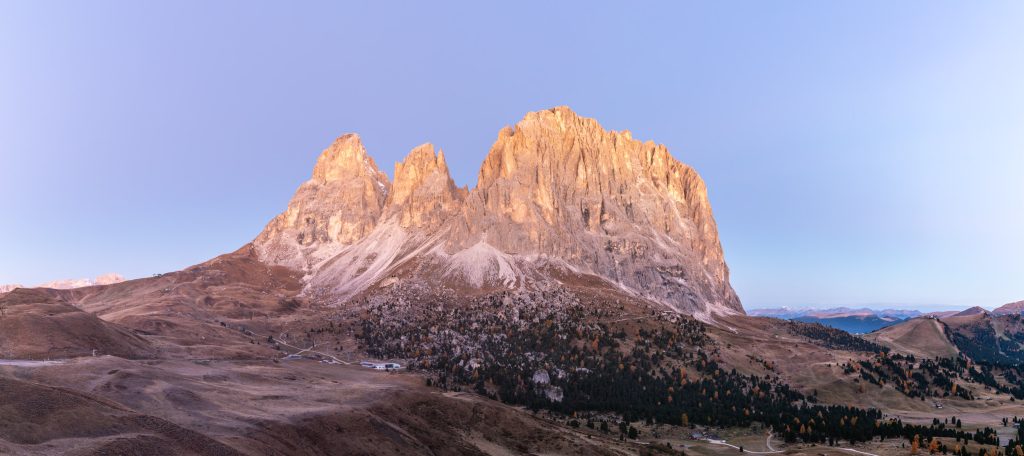
In October 2022, I headed off to the Dolomites in northern Italy. An area that I have come to know extremely well, as this was my 9th trip to the area.
Every year, I take clients to this beautiful corner UNESCO protected area of Italy to take in the autumn colours that abound in the larch trees. Combine those fiery colours with the high and jagged mountains, and it’s a recipe for landscape photography heaven.
The Dolomites provide an almost endless variety of imagery for landscape photographers. The area is huge, and it takes repeated visits to really get underneath the skin of what there is to offer.
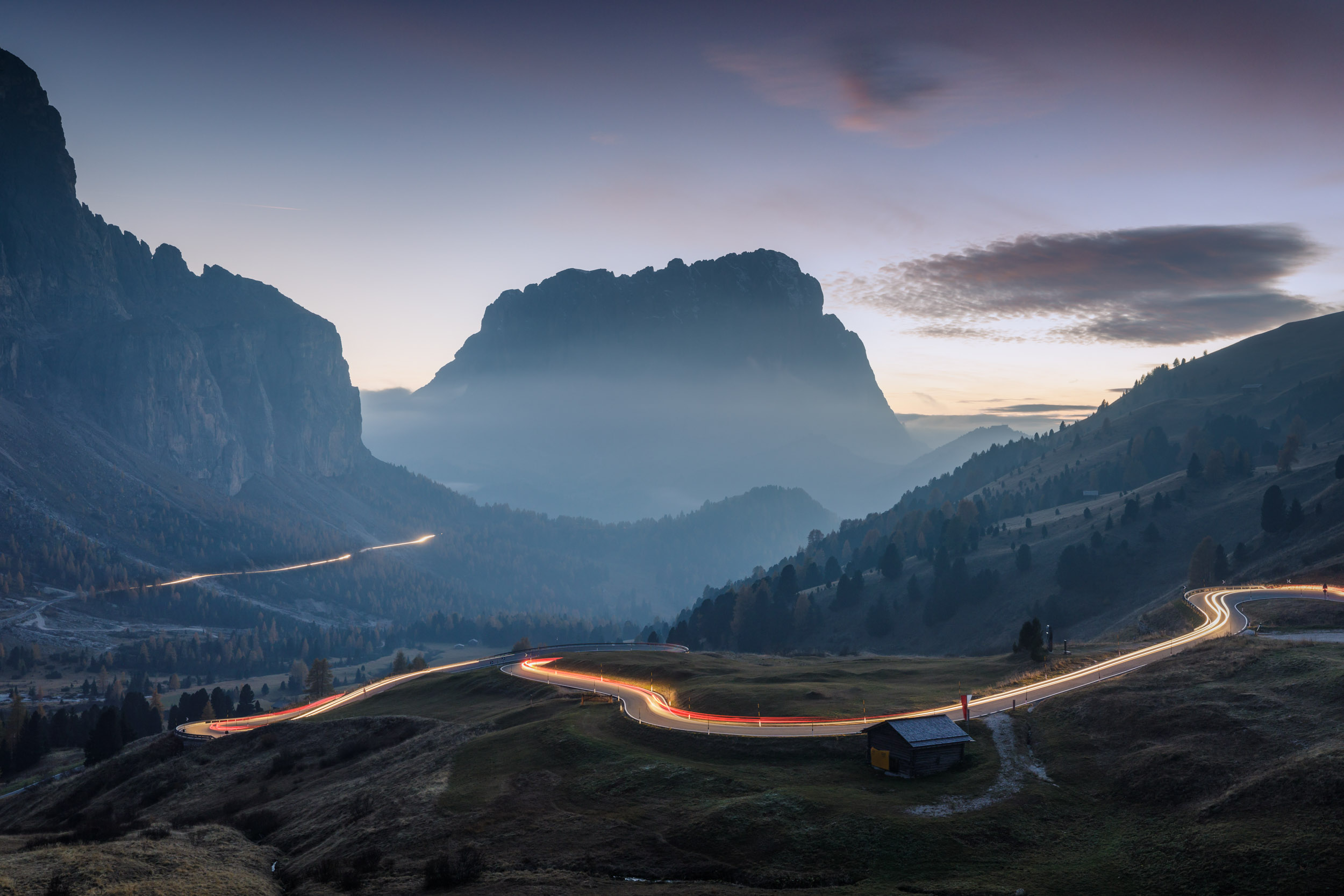
After picking up clients from Venice airport, it was off to the Val Gardena. Luckily, our early arrival allowed us to quickly head up to the Gardena mountain pass to capture the setting sun, then the traffic trails going down the pass. It took a couple of attempts as the requisite cars weren’t always there when we needed them.
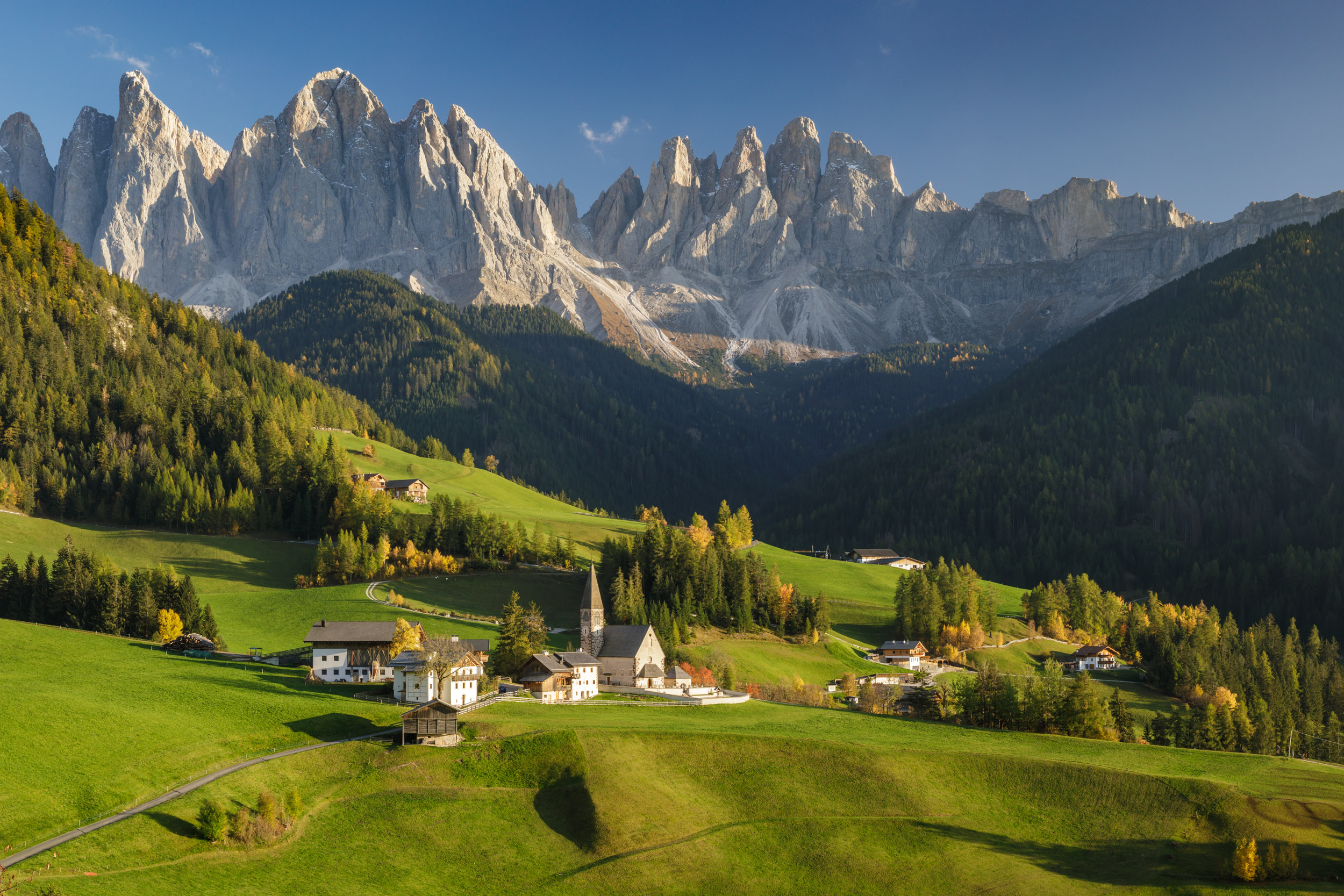
The second day saw the group head into the famous Val di Funes. It’s here that you’ll come across the famous view of the church of Santa Maddelena with the Odle range of mountains that sit behind it.
Although this is the most iconic view in the valley, it’s certainly not the only place you can get great imagery. But as a tour leader, I have to take people to those icons so they can tick them off the bucket list.
However, what I also do is take people to places that aren’t on the well-trodden tour routes. This offers clients more variety than just a tickbox mentality of those icons. But rest assured that just because they aren’t well known, it doesn’t mean they aren’t up to the same status as their more famous brethren.

The last part of the first stage of the trip was spent going to the Alpe di Siusi. This beautiful mountain plateau is Europe’s highest. It’s also highly protected and as such, it takes a walk of an hour to get people up there.
The walk to the plateau slowly unfolds, and as you reach the halfway point, the reason for being up there becomes clear to those who make the journey. A backdrop of huge mountains that overlook the plateau is quite simply awe-inspiring.
Once in place, it’s just a case of waiting for the sunset. That setting sun rakes across the landscape and illuminates the larch trees that dot around the plateau, providing a breathtaking scene that’s sure to please any landscape photographer.
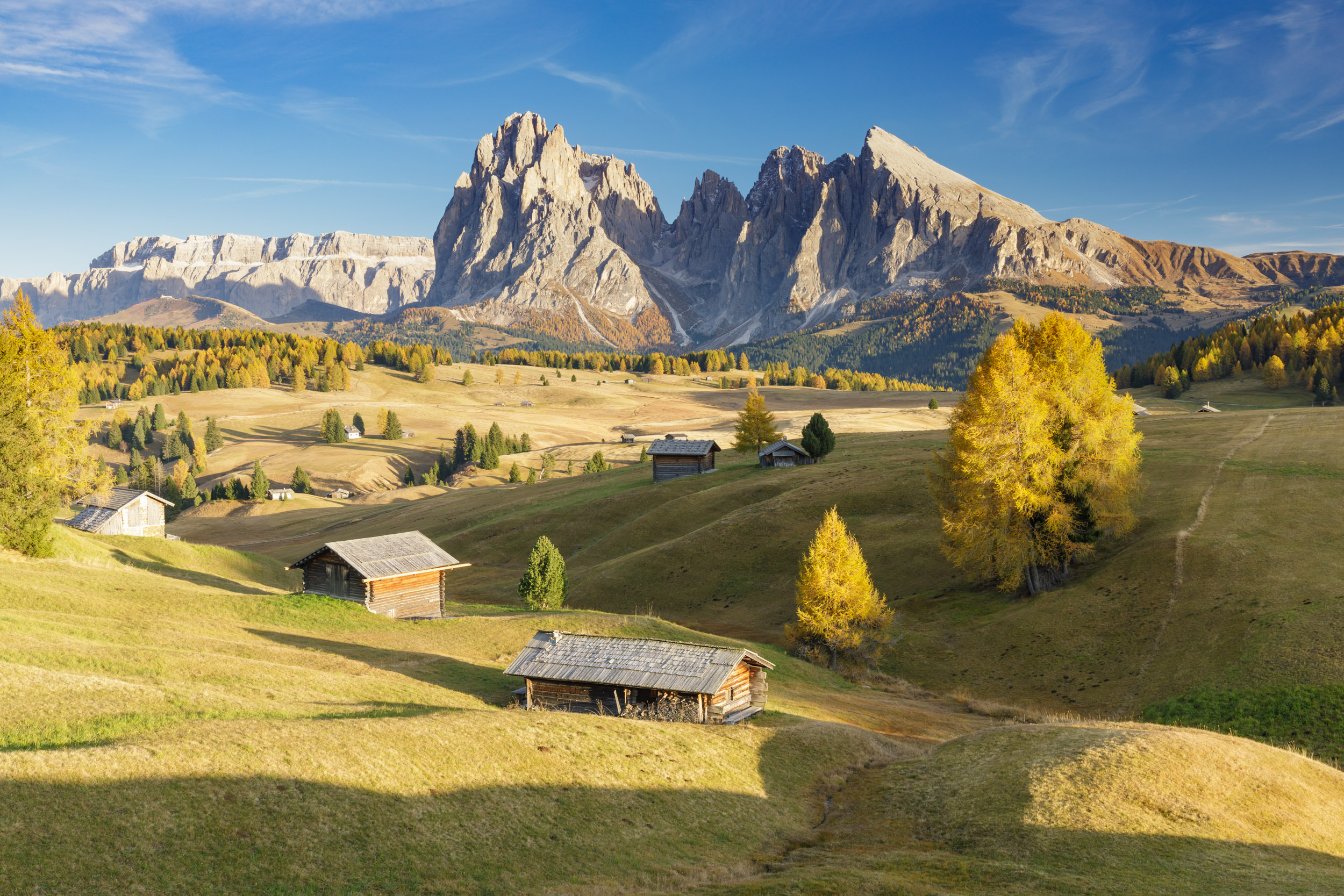
The second half of the trip focuses on the Cortina d’Ampezzo area. This side of the Dolomites loses the verdant valleys and vineyards in favour of higher mountains and even more of those full-on orange larch trees.
Although each area offers many photographic opportunities, I spend more time here than on the Gardena side. Is that fair to the area around the Val Gardena? I don’t believe it comes down to fairness, but rather that the Gardena area offers a warm-up.
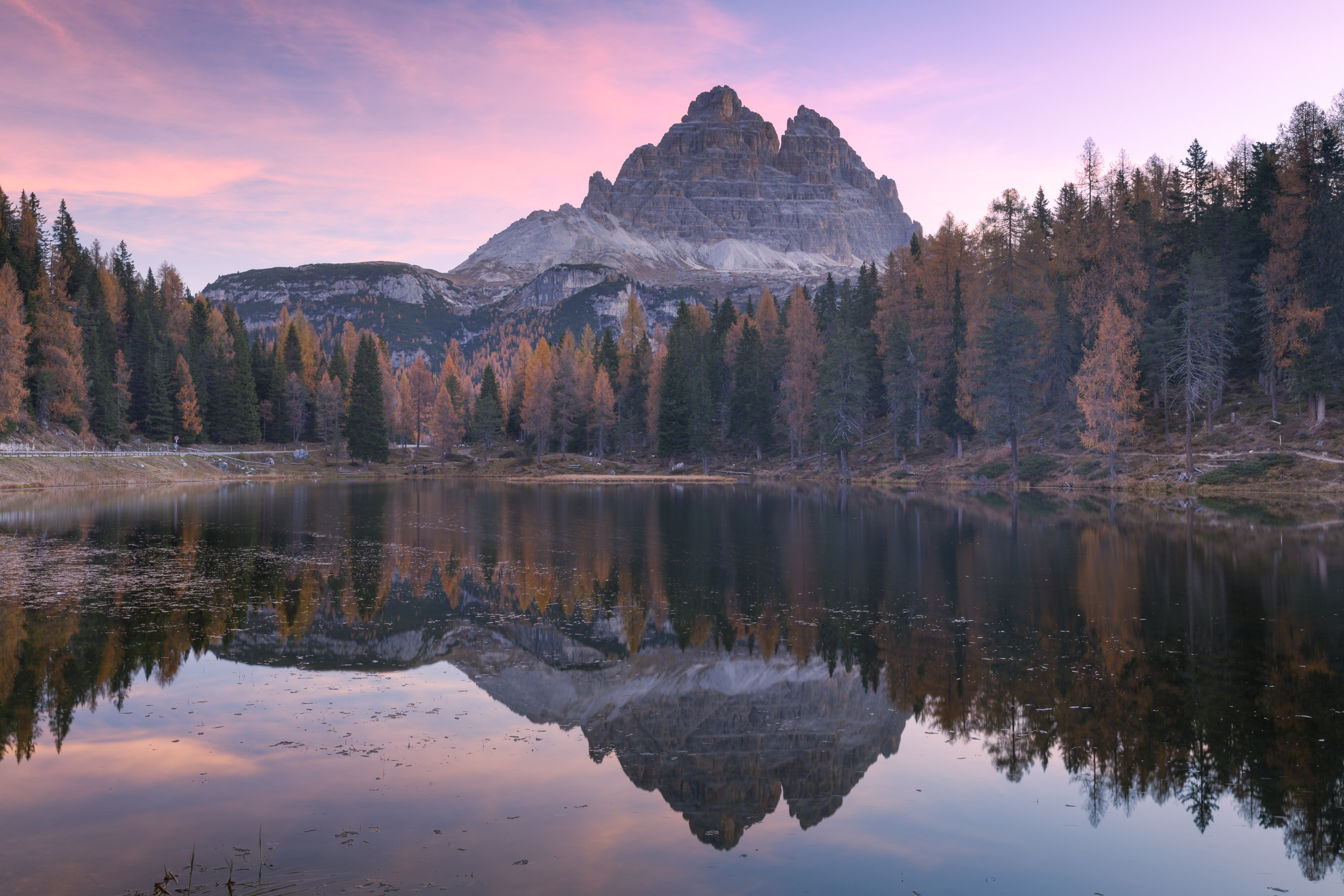
Ideally, each area would be given an equal number of days, but then I’d have to either shorten the trip or make it longer. So I decided to let the Cortina area shine.
So far, each time I’ve run the Dolomites photo tour, everyone feels the balance is right, so why mess with a winning formula?
Like the Val Gardena, the mountains and valleys that surround Cortina d’Ampezzo offer many iconic shots as well as lesser-known but still just as beautiful scenes that anyone would be pleased with.
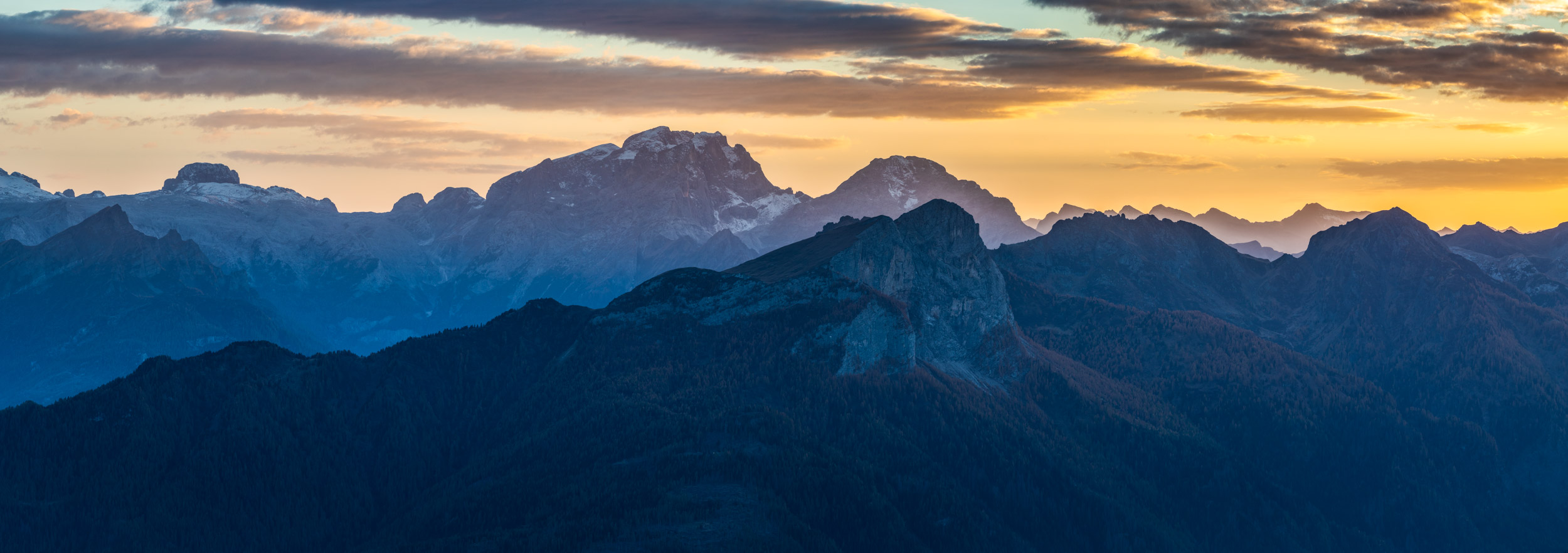
A question that often comes up with the Dolomites photography tour is how far do you have to walk. The answer is it depends. It depends on the demographics of the people that I take with me, but also the locations. Some particular places actually need you to take a mountain guide with you for safety reasons. The mountains here are high, and some paths offer stupendous views, but very dangerous paths.
The trip is designed to get people to easy-to-access places without having to walk too far. This also feeds into getting back to the base at a reasonable time so that they can eat and refuel their body.
In any case, the Dolomites photo tour was another success, and it’ll be running again this coming October.
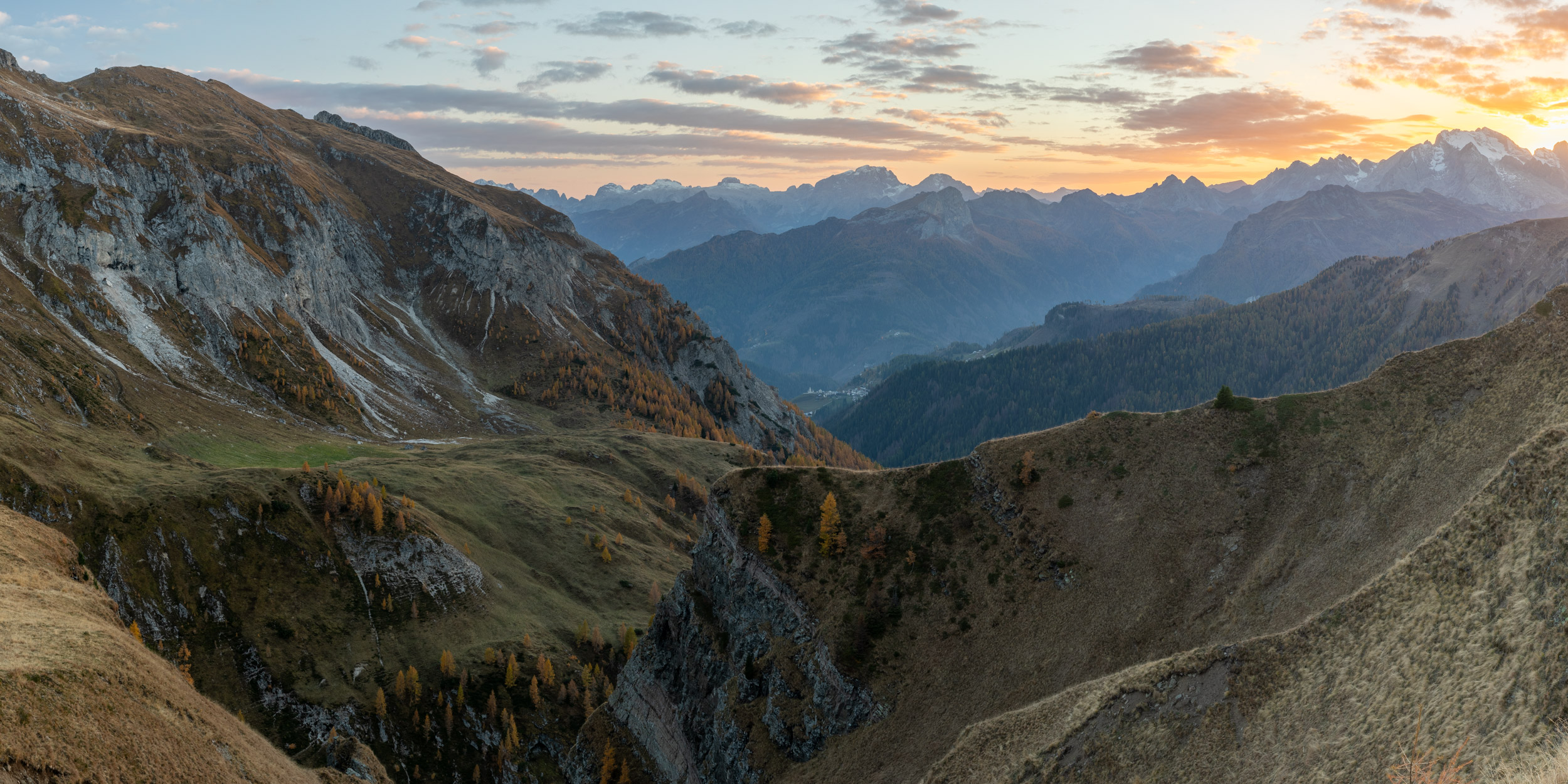
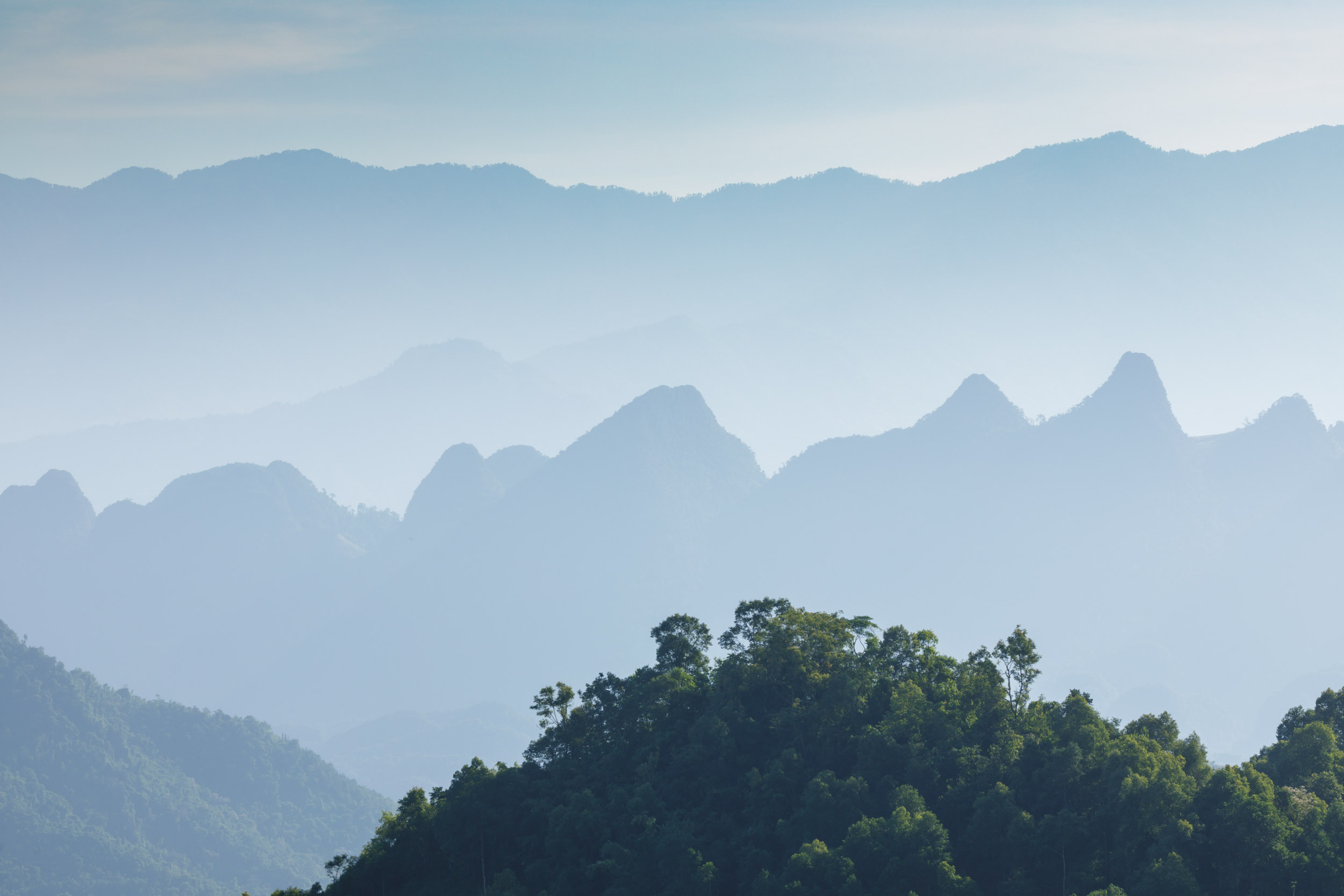
At the beginning of November 2022, I headed back over to Vietnam. I aimed to discover the northern provinces of Ha Giang and Cao Bang, as well as to revisit some places around Ha Noi.
After a long flight from Paris to Ha Noi, my guide and good friend, Trang, picked me up at the airport along with our driver. Ahead of us was a drive of several hours in order to reach the province of Ha Giang.
This is an area of Vietnam where you’ll find many motorbike tours but not a lot of photographers. Indeed, during my time in the two provinces, I don’t think I saw another photographer!
Both Ha Giang and Cao Bang border China, and you’ll find several roads that will take you to the border points between the two countries.
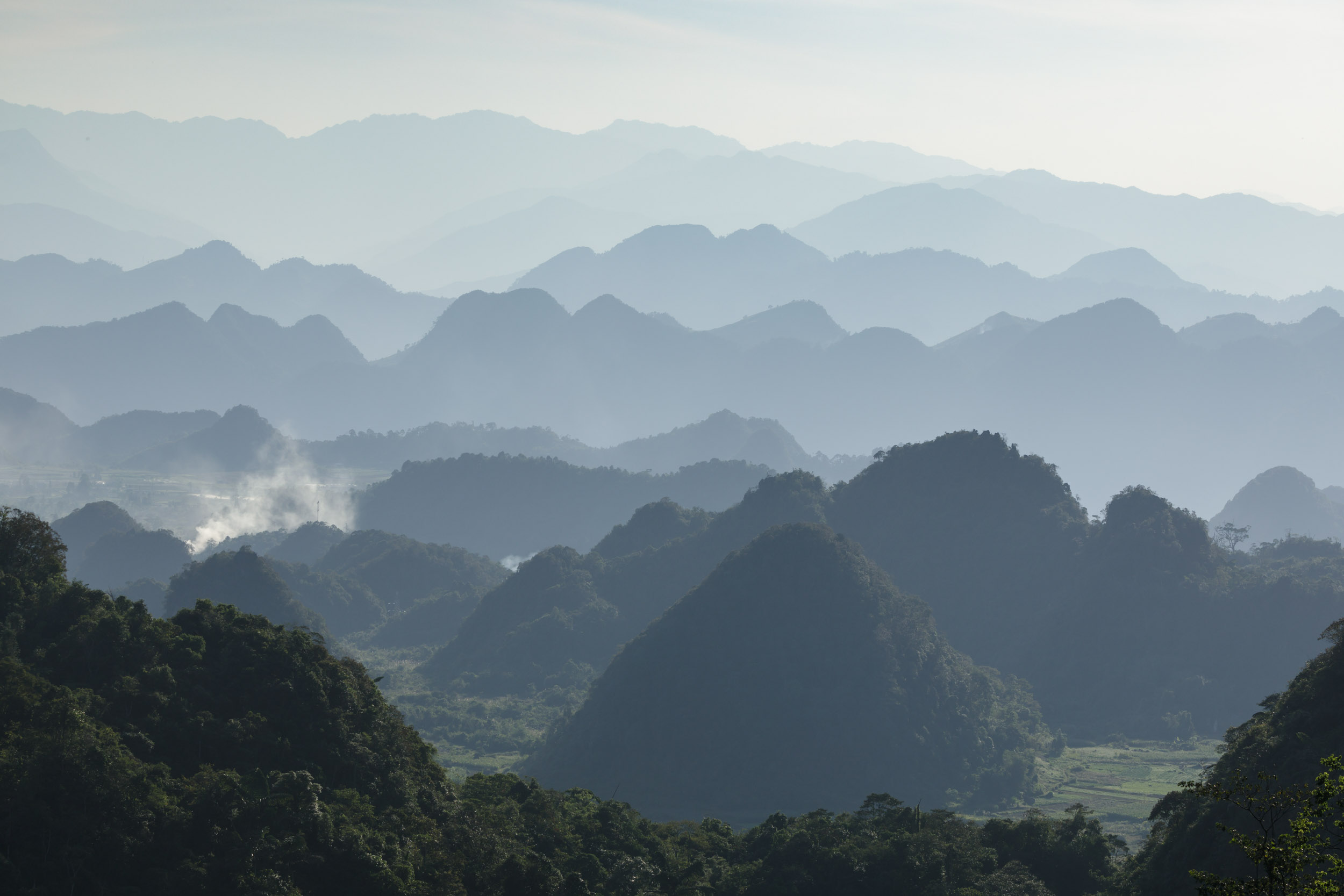
During November, the area sees tourists visiting to see the buckwheat flowers in bloom. Now, this was something that was on my list, but the landscape took over.
Culture-wise, you’ll find varying hill tribes, so the opportunity to photograph people in their natural working environment is a strong draw too. I find the faces of people in Southeast Asia to be extremely photogenic, so it’s a huge draw.
The Hmong people who live up here can be found wearing their traditional clothes, which are colourful and vibrant, which again helps the images that you get.
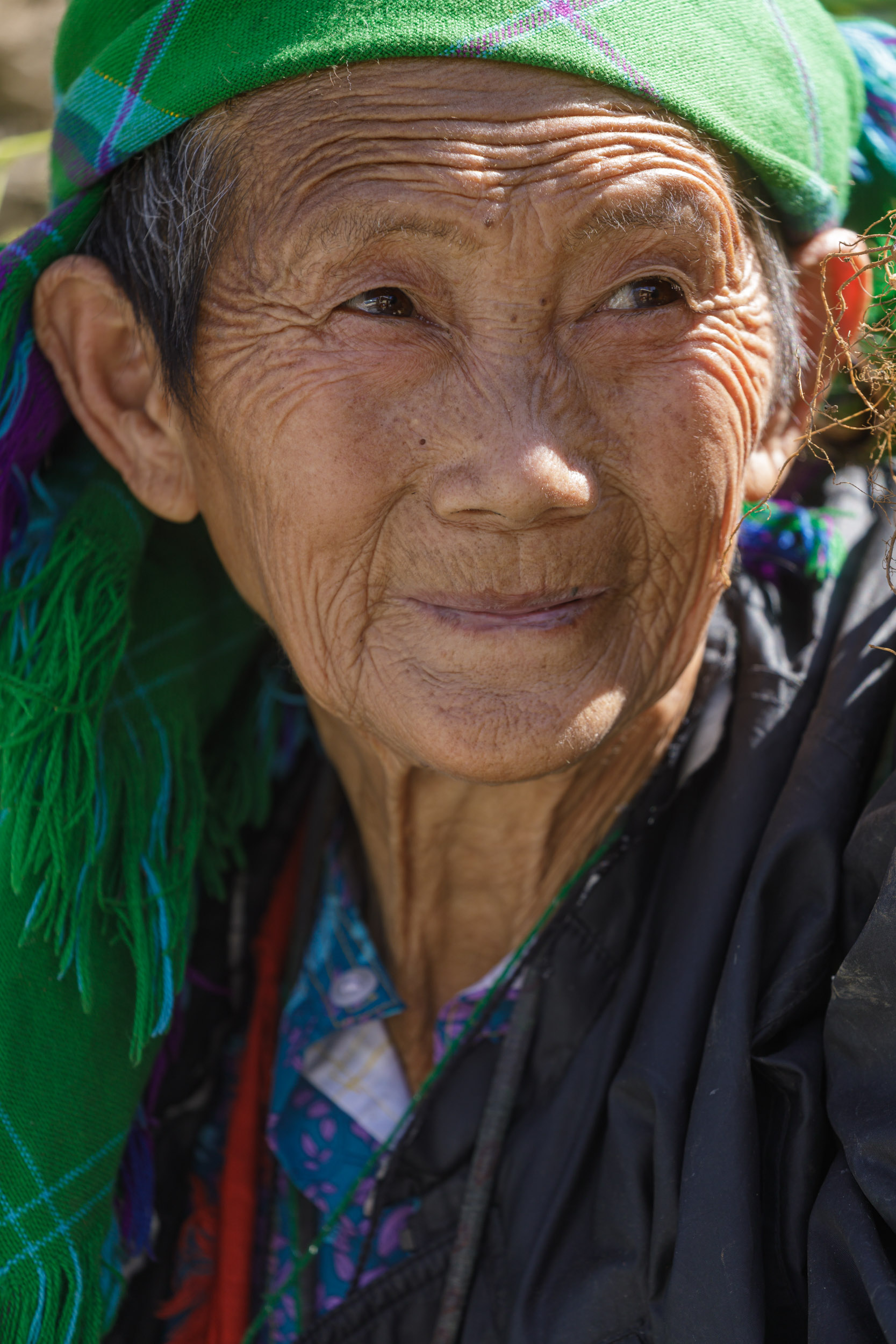
As this was a recce, there was only a rough plan as to what it was we should do. So we had a good deal of flexibility in which to plan our day and find some gems that were dotted around Ha Giang.
One of the things we found was a stunning view right on the border of Ha Giang and China. A deep-sided valley that looked directly south, which meant it could work at both sunrise and sunset.
My guide, Trang, has become invaluable to me as she’s starting to see images and helping me to find different spots, so together we can hunt things down a lot quicker.
Below is a panorama from a joint team effort, whereby we were able to quickly scout out the view.
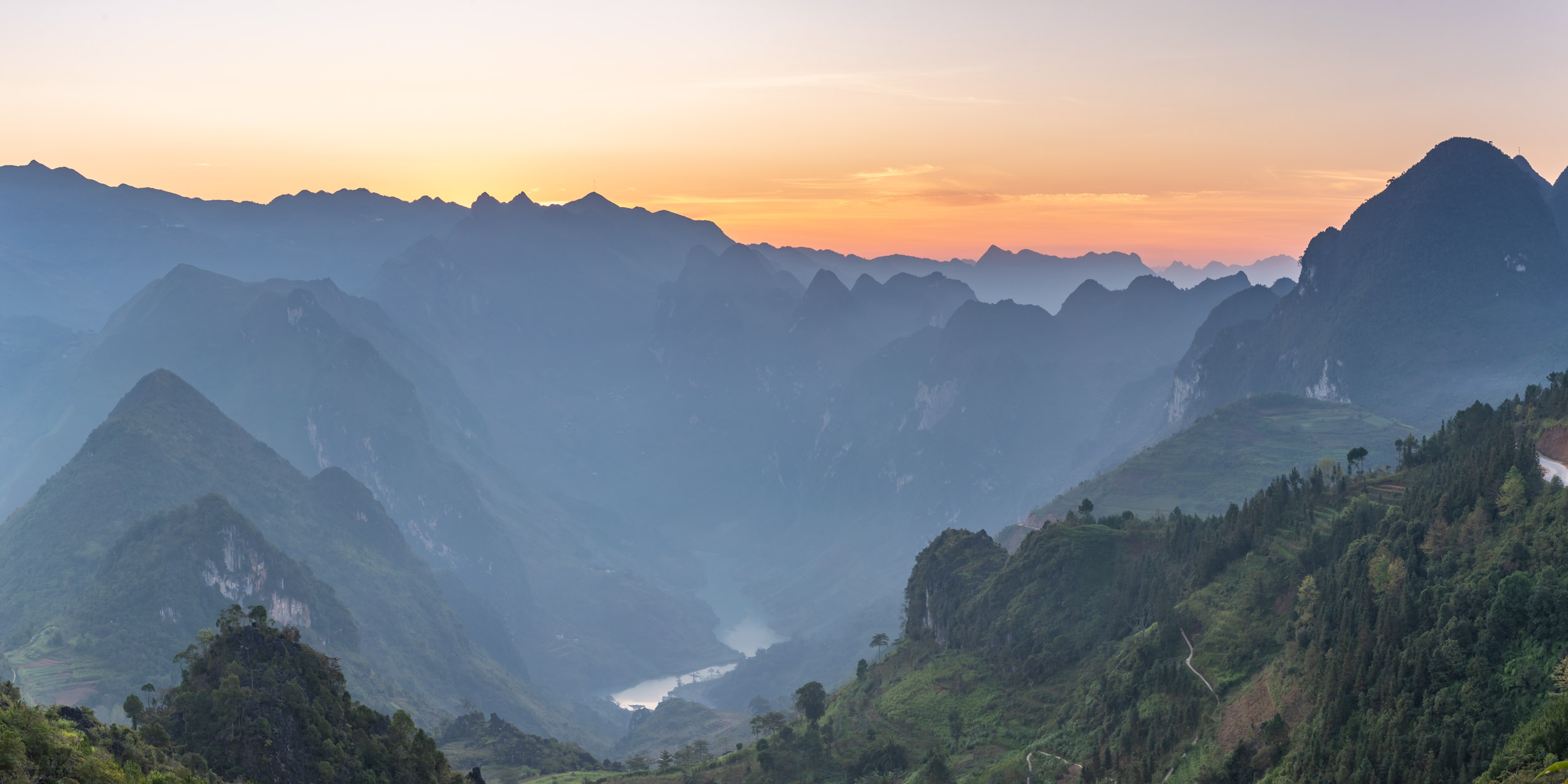
From Ha Giang, we headed east over to the province of Cao Bang. And just like Ha Giang, it offers stunning landscapes as well as a look into varying cultures and people.
Like the drive up from Ha Noi, the drive to Cao Bang took a number of hours to get to. Our journey also got delayed as a mountain road had suffered a rockfall, which the local workmen had to dynamite.
Sadly, because of this, I missed a good opportunity to discover an amazing area that still had yellow-coloured rice terraces. But it’s been noted, and I’ll get to it later this year.
Our first day in Cao Bang was spent trying to uncover just what was there photographically. This may sound quite simple, but up here in northern Vietnam, there aren’t many reference photos to help you decode just what there is to do. It’s not like visiting the Lake District or Scotland, where thousands upon thousands of images exist to help you make educated decisions as to just where it is you should be going.
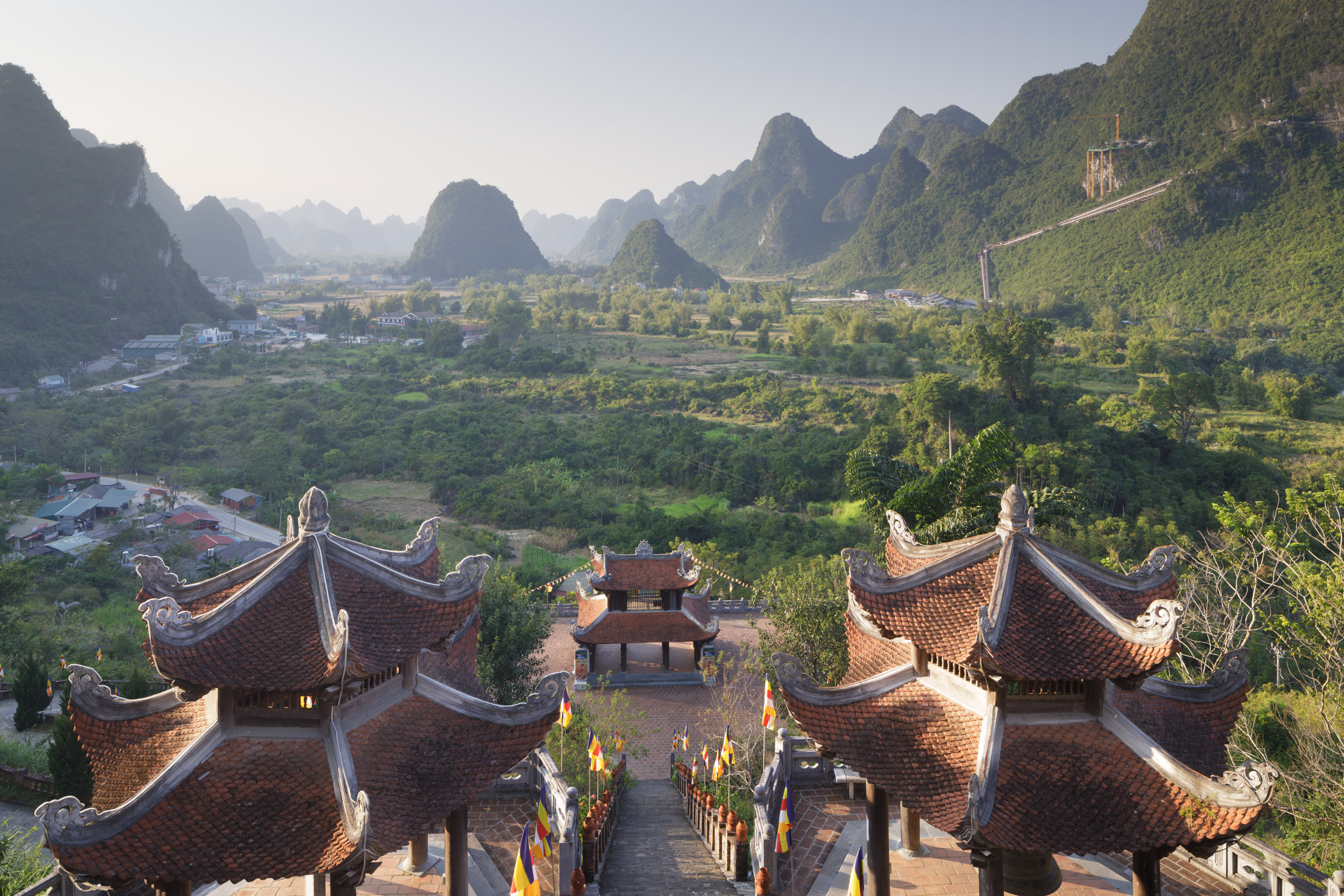
As well as beautiful views, you’ll also find temples and more cultural sights too as well as people.
My continued visits to Vietnam are allowing me to slowly learn various bits of the language, which are helping make the interactions with local people more interesting. It’s something that I encourage people to do, as if you take the opportunity to at least learn some pleasantries, you’ll find you get much more out of them.
One of the best examples of this was an unexpected discovery when we travelled up to the border area again.
Trang and I were let into a small temple so we could have a look around. But this wasn’t the discovery. It was giving the key back to the gatekeepers, which gave us an amazing environmental portrait.
Inside a small workshop was a hub of activity. Food was being prepared which combined with steam and sun rays provided a stupendous opportunity to watch local people at work.

Once we had dispensed with the farthest reaches of the north, we headed back to Ha Noi. My reasoning for doing so was to re-photograph the incense village as well as another location that I had never visited before.
The incense village has now become world-famous with its stunning array of incense being made in several workshops.
One particular workshop offers the chance for photographers to get a little height in order to look down on the workers arranging the incense ready to go out.
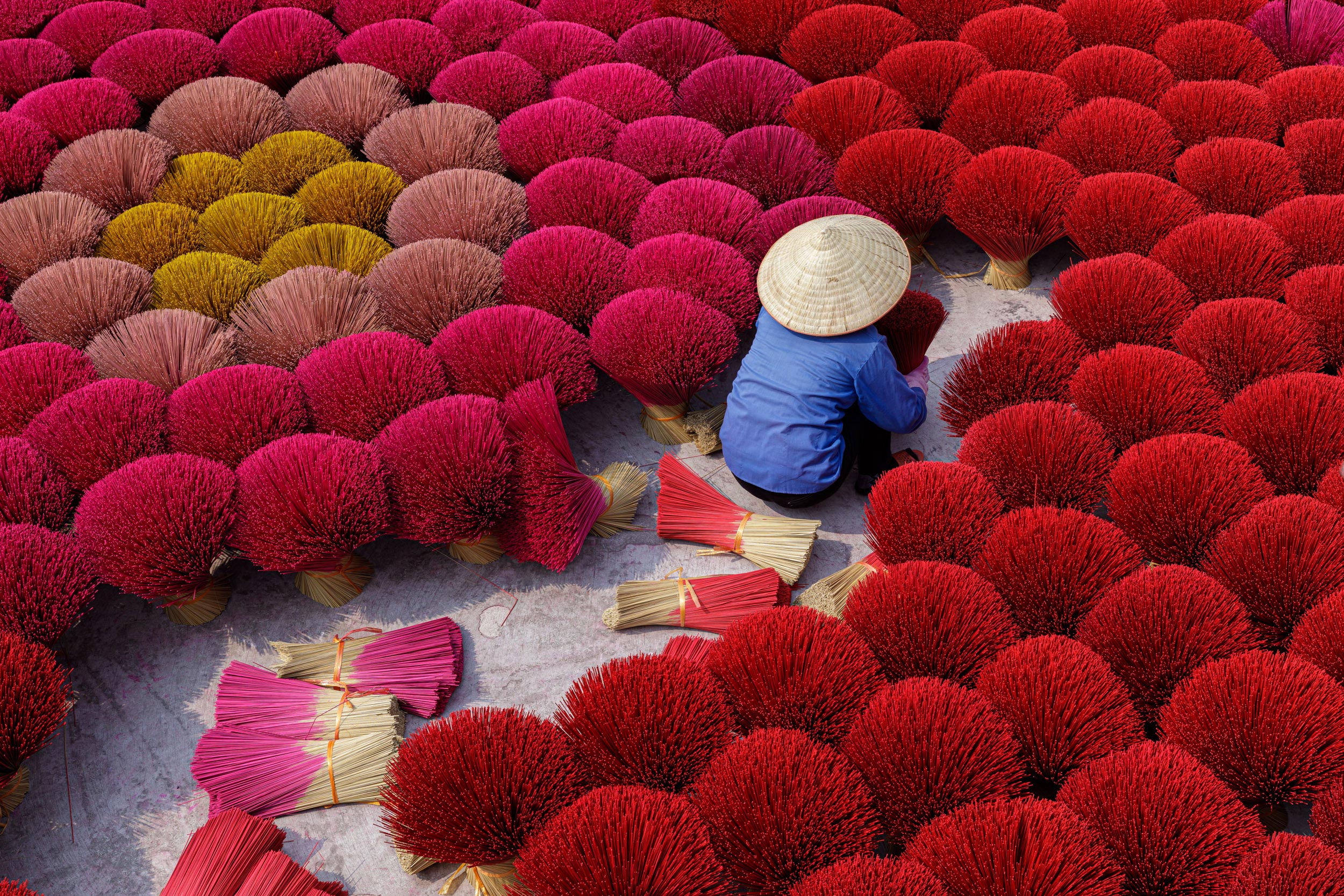
The other location that we visited involved sending up my drone in order to capture a unique view.
In an inconspicuous courtyard is a small factory that creates a famous sauce comprising soya and fermented sticky rice. From ground level, images can be obtained, but it’s when you gain a little extra height that the magic starts to happen.
With drone photography, the key isn’t to send your drone up to the maximum height. In fact, you’ll often find it’s only around 10 metres or so, and images fall into place.
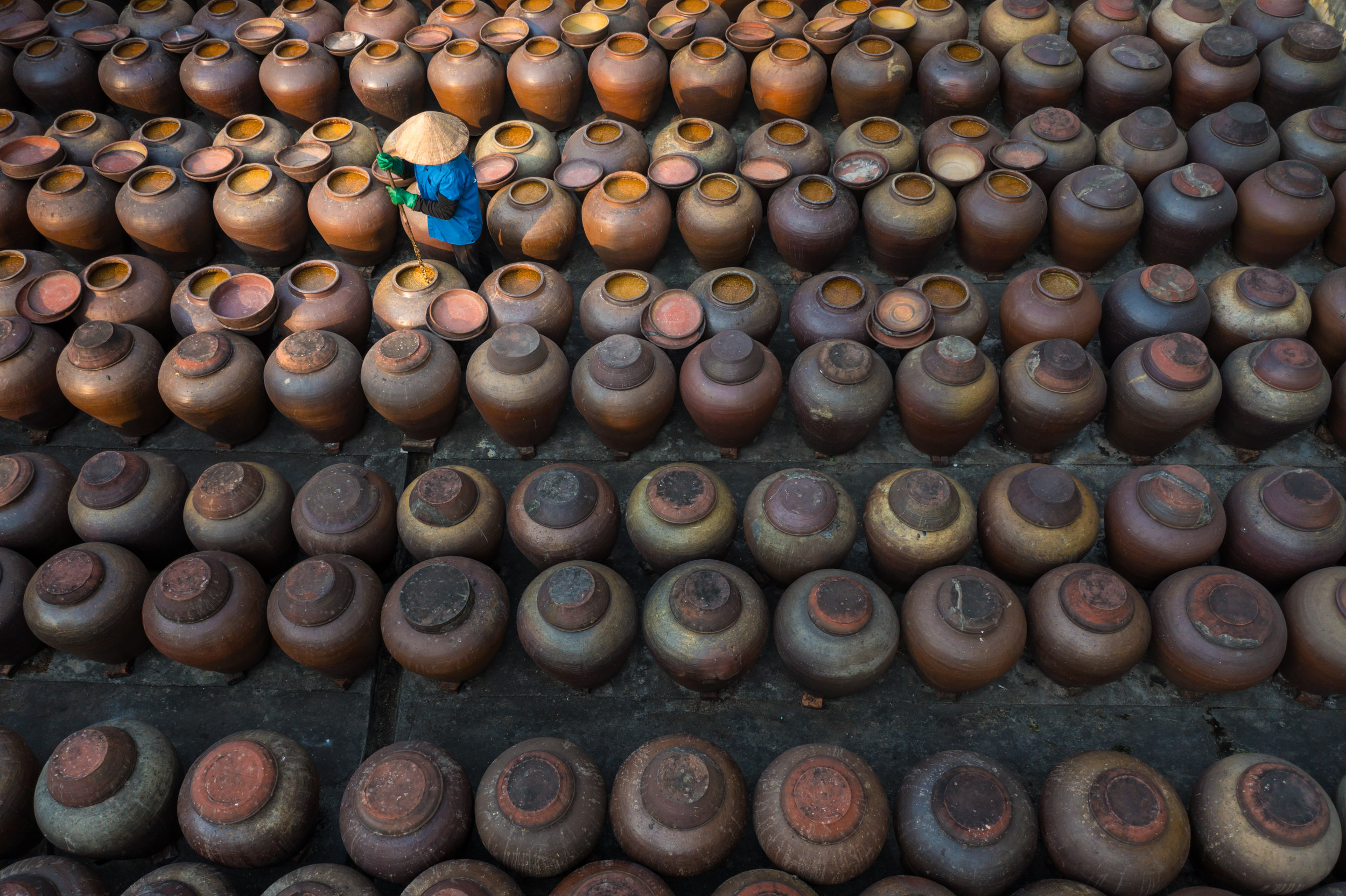
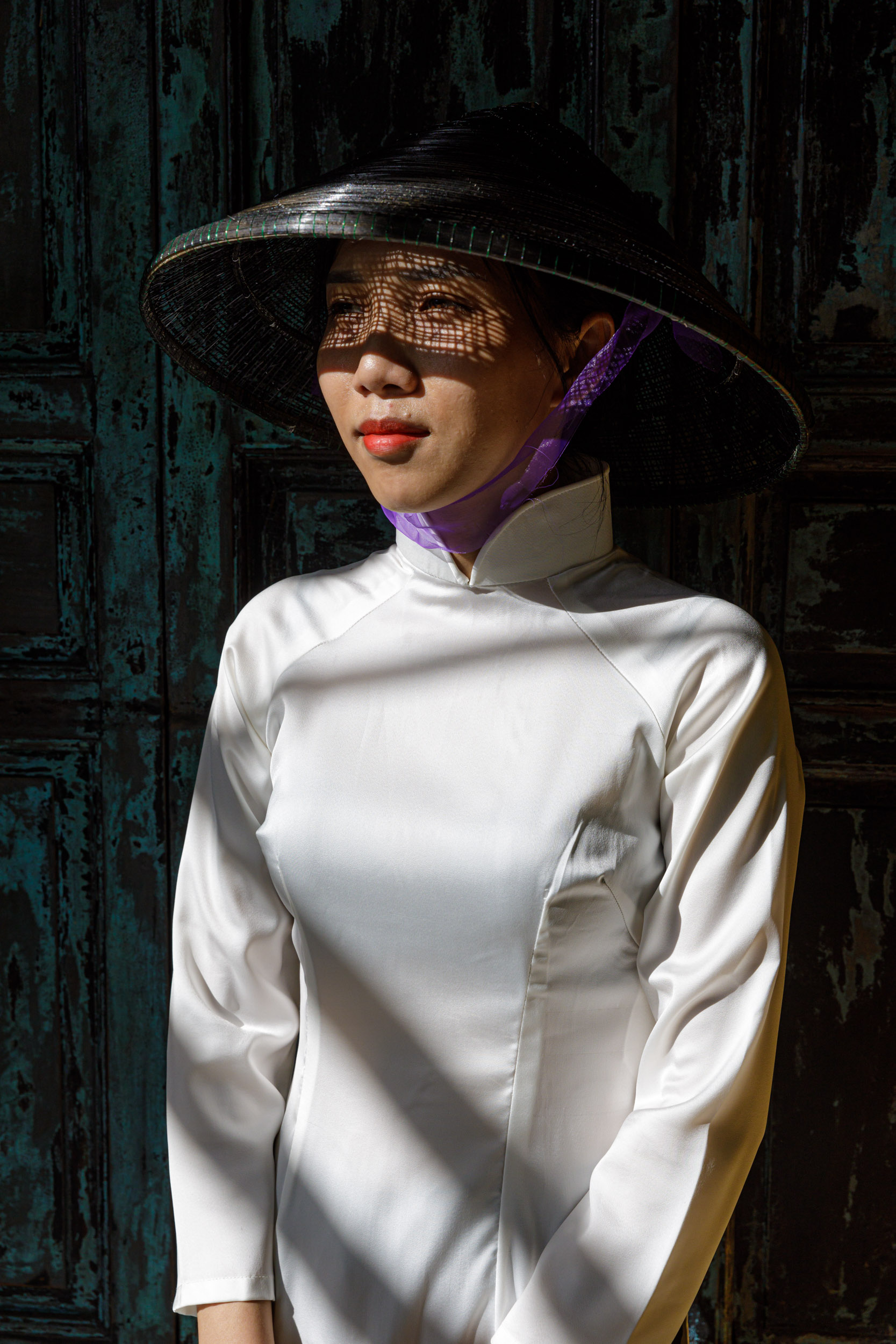
When I wander around Vietnam, I’m always on the lookout not just for interesting people but also for interesting places and props that can help to make an image whole.
Wandering around a small town, I noticed a photographer taking some wedding images of a couple. But what caught my eye was the traditional hat the lady was wearing. It was unusual in that it was black but also had holes in it. Those holes formed an interesting go-bo for the sunlight.
Banking on the notion of the hat, I then spotted the doorway of an old house. The beautifully weathered doorway gave a fantastic backdrop to anyone who stood in front of it. The age-old wood combined with the colour helped to set everything off.
The last thing I needed was a model. A woman who fit the bill of giving both that traditional Vietnamese look, and was also happy to be photographed on a sunny afternoon.
Sitting in a restaurant, waiting to order food, the waitress came up to me and asked if I was ready to order my food. I looked up at her and found my model. She had the look as well as the slim figure that would set off the traditional ao dai dress that is so often associated with Vietnam.
After some negotiation and showing her that I was indeed a professional photographer, she agreed, as did her boss, as he was losing an employee for an afternoon, to come out and be photographed.
So all three elements were brought together in order to capture the image you see here. An image I love looking back on, as it’s just that little bit different to the usual images of a young woman in an ao dai.
In 2023, travel has well and truly opened up again. Here in Europe and the UK, things are far better than they were this time last year, with everywhere open for business. It’s only a few countries that are holding out on restrictions, such as China.
The travel challenges that were faced in some countries have all but disappeared. Japan was holding out but has now fully opened again to tourists, which is a welcome relief to those of us who like visiting this stunning country.
For any overseas photography tour that I run, I make sure that my clients are fully up to speed with what is required of them. Specific countries’ government websites are checked frequently to ensure you know what you need.
So what do you need before getting out there and going back into the wild blue yonder?
COVID pass
A number of countries have issued these to prove that you’ve been vaccinated. Some people have an issue with them, but I don’t. If it facilitates travel being easier, getting from one country to another, then so be it.
However, what I would say is that it’s also best to keep a copy of your vaccinations in paper form. Each country has its own form of the COVID pass, and, as experienced back in October 2021, apps can go out of date on a particular person’s phone. Technology is wonderful until it fails, so it’s best to be prepared.
COVID Tests
Lateral flow, PCR, PC-LAMP tests and whatever else that they throw at us. Depending on the country will depend on what you need to enter or return home will depend. Be sure to check what it is you need in order to facilitate your travel. And also make sure of the timeframes between getting the results and being allowed to travel. Some countries ask for a test result 72 hours beforehand, and some ask for one 96 hours before travelling. At its most extreme, though, you may have to provide evidence of one taken 24 hours beforehand.
Insurance
Initially, there seemed to be a slow response from insurance companies on how to deal with travellers who get caught up in things. If a border suddenly closed, then you were pretty much left to your own devices. But this has now changed, and insurance companies are offering specific policies that will cover you should something untoward happen in terms of a pandemic. And note that I said “pandemic” rather than COVID.
Recently, I renewed my travel insurance. The specific wording that covers me if something should happen is “pandemic” rather than COVID.
Before travelling to ANY country, see if they specifically require insurance that will cover you. Some countries, such as Chile, are asking for this before you travel. There is also a specific amount that you need to be covered for, too, so make sure you’re covered!
Masks
From the arrival at the airport to the arrival at your destination then be prepared to wear a mask. This isn’t always the case, though, as some airports and airlines are now not requiring you to wear masks. They are now only advising that you should wear one during the duration of your travel.
Some airlines are, however, demanding it, and some countries, such as Vietnam, require that you wear a specific type of mask on the plane. Make sure you check the requirements before getting on the plane.
Depending on the length of your flight and also the airline, you may get yours swapped out. When I travelled to Uzbekistan back in August 2021, I used Aeroflot for both flights. Each flight was 4 hours long, and after 2 hours, the staff came along and gave us new masks.
Country-Specific Tracking Apps
Certain countries are asking that, as part of entry onto their territory that you download their tracking app. Again, make sure you are aware of any apps that need to be installed on your phone before travelling.
Conclusion
Things are pretty much back to pre-COVID times, and, yes, it is a bit of a game, which is maybe too much stress for some. But if you take a step back and work things through, then you’ll find that in reality, it’s pretty simple.
What you normally find is that getting your country-specific vaccination QR code is the hardest part. Everything else is relatively simple in comparison.
Most countries have phased out restrictions, but it’s always worth checking the small print just to make sure you don’t fall foul of anything.
And if you’ve enjoyed reading the January 2023 newsletter and want to get it before it appears on my website, then feel free to sign up.
Don’t forget to use these links to “like” or “follow” my Facebook, YouTube and Instagram pages where I upload new images and vlogs. This is the best way to keep up to date with my latest work.